 |
 |
 |
| |
Almost Half in US Women’s Group Make PrEP Visit--But Only 10% Start PrEP
|
| |
| |
AIDS 2020: 23rd International AIDS Conference Virtual, July 6-10, 2020
Mark Mascolini
Almost half of US women enrolled in a feasibility trial testing a PrEP uptake intervention saw a provider to discuss PrEP [1]. But in the short follow-up so far, 3 months, only 10% started PrEP. And proportions seeing a provider and starting PrEP did not differ between the intervention arm and the control arm. The findings underline the difficulties in getting at-risk US women to consider and start PrEP.
Only about 2% of US women eligible for PrEP start this proven HIV-prevention strategy. And research has yet to identify an intervention that will encourage high-risk US women to begin PrEP. Collaborators at the University of Pennsylvania, New York Blood Center, and other institutions launched this feasibility pilot study to explore the merits of a theory-based PrEP intervention for US women.
Researchers recruited women in two big cities with high HIV rates-New York and Philadelphia. The intervention, Just4Us, begins with a 1-hour counselor/navigator session including an information video; discussion of perceived susceptibility to HIV, PrEP beliefs, stigma, and access barriers and solutions; and initiation of a text-message reminder system. A follow-up phone call encourages women to make an appointment to begin community-based PrEP care. Control-group women also have a counselor/navigator but receive only handouts on PrEP facts, cost, and providers.
Eligible participants are HIV-negative cisgender women 18 to 55 years old who have a cell phone and meet PrEP eligibility criteria for sexual or drug injection exposure. Researchers recruited them through street outreach, homeless shelters, drug treatment centers, and referrals from enrolled women.
The investigators randomized 61 women to the Just4Us intervention arm and 22 to the control arm. Age averaged 37 in the intervention group and 39 in the control group. About 79% of each group were black and about 25% Hispanic. More than 80% in each group reported financial insecurity in the past 3 months. While 27.6% in the intervention group had a job, only 18.2% in the control group worked. About 25% overall did not graduate from high school.
Only about half of these women believed they ran a risk of HIV infection, yet about 78% intended to use PrEP in the next 3 months, although 53% had not heard about PrEP before this study. In the intervention and control groups, 47.5% and 54.5% used drugs, 54.1% and 86.4% had condomless vaginal or anal sex, and 62.9% and 77.3% had multiple partners. Almost all women, 95%, felt respected by their healthcare provider, and 89% had health insurance.
While 54 women in the intervention arm (88.5% of 61) completed 3 months of follow-up, 21 (95.5% of 22) did in the control arm. Similar proportions in the intervention and control arms found a PrEP provider (42% and 42%), got information about paying for PrEP (54% and 57%), and made a provider appointment to discuss PrEP (46% and 43%). A lower proportion of women in the intervention group than the control group went to their PrEP provider appointment (33% versus 52%), while similar proportions got a PrEP prescription (13% and 14%), got the prescription filled (7% and 10%), and started taking PrEP (11% and 10%).
At 3 months women reported several barriers along the PrEP continuum of care: insurance issues, difficulty getting an appointment, need to cancel appointment because of competing interests, and learning provider does not prescribe PrEP. Other women reported they did not feel at risk for HIV right now and would use PrEP if needed. Some worried about possible PrEP side effects and interactions with other drugs. Others worried about remembering to take a daily pill.
Close to half of women in each study arm made an appointment with a PrEP provider, a finding leading the investigators to conclude that Just4Us is an acceptable and feasible PrEP intervention. Although only 10% of women actually started PrEP (with little difference between arms), the researchers observed that 3 months are not enough to fully assess PrEP uptake. They see the need for a larger study sample and longer follow-up to evaluate the efficacy of Just4Us clearly.
Reference
1. Teitelman AM, Tieu HV, Davis A, et al. Just4Us: A theory-based PrEP uptake intervention study for PrEP-eligible women in two highly affected U.S. cities shows favorable PrEP-use intentions but many barriers along the PrEP cascade. AIDS 2020: 23rd International AIDS Conference Virtual. July 6-10, 2020. Abstract OAD0606.
https://events.ugovirtual.com/event/AIDS2020/en-us#!/Auditorium
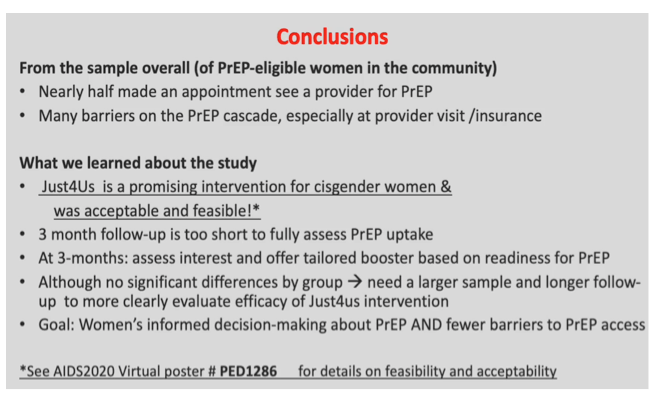
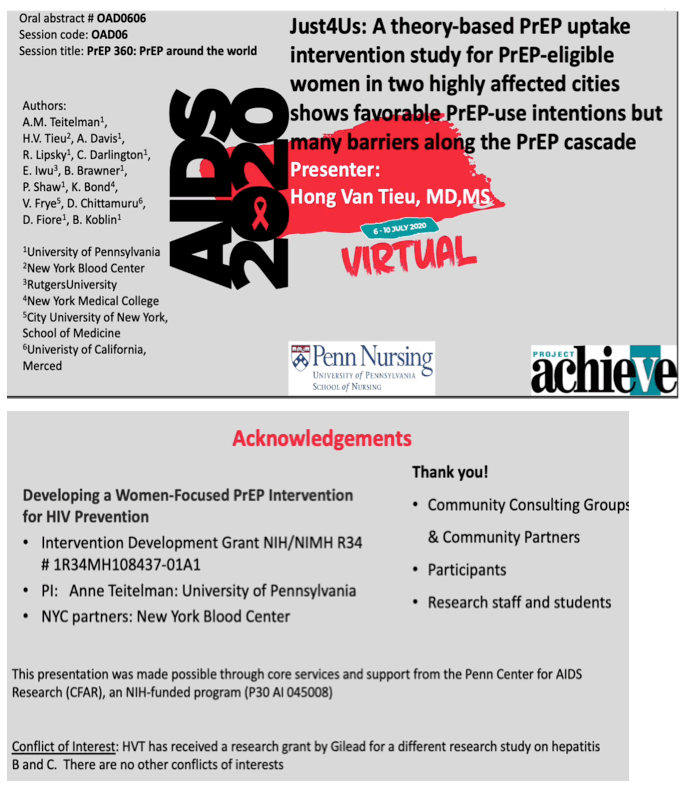
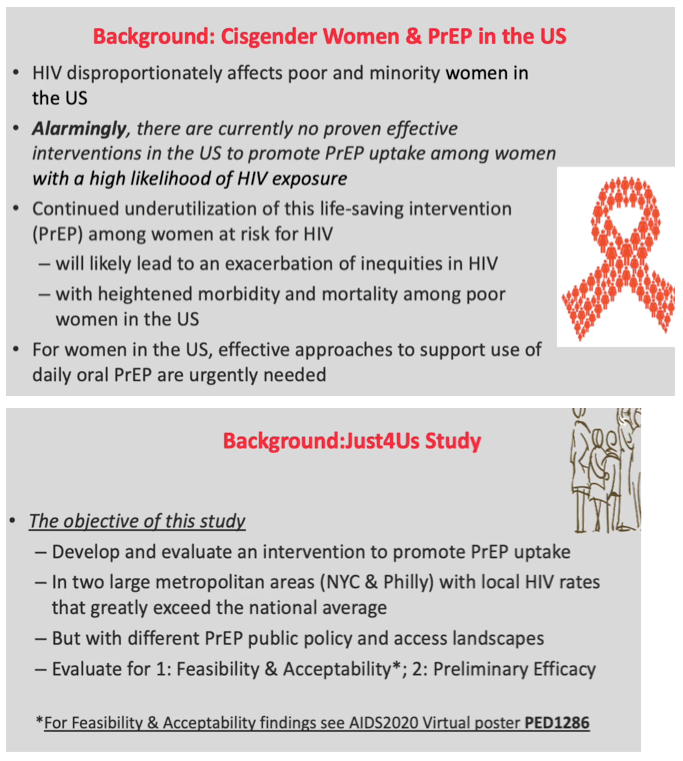
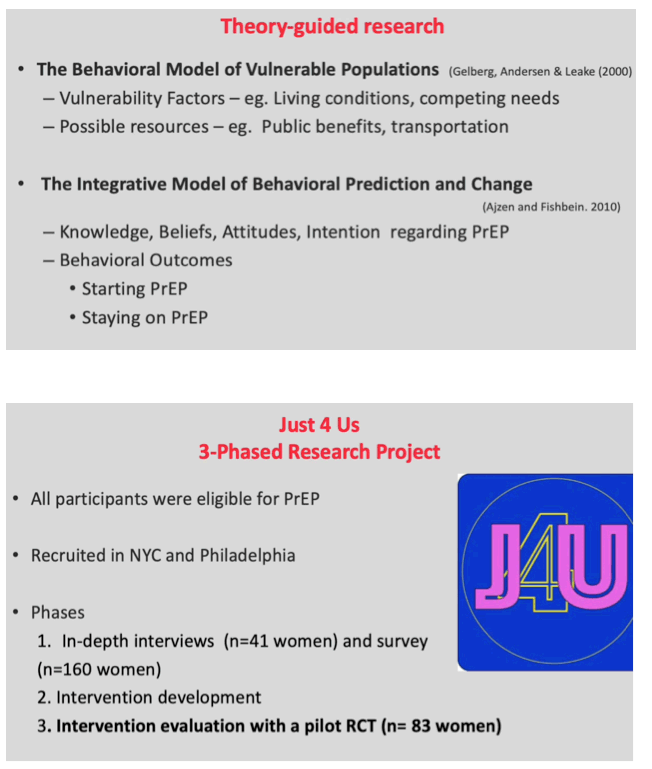
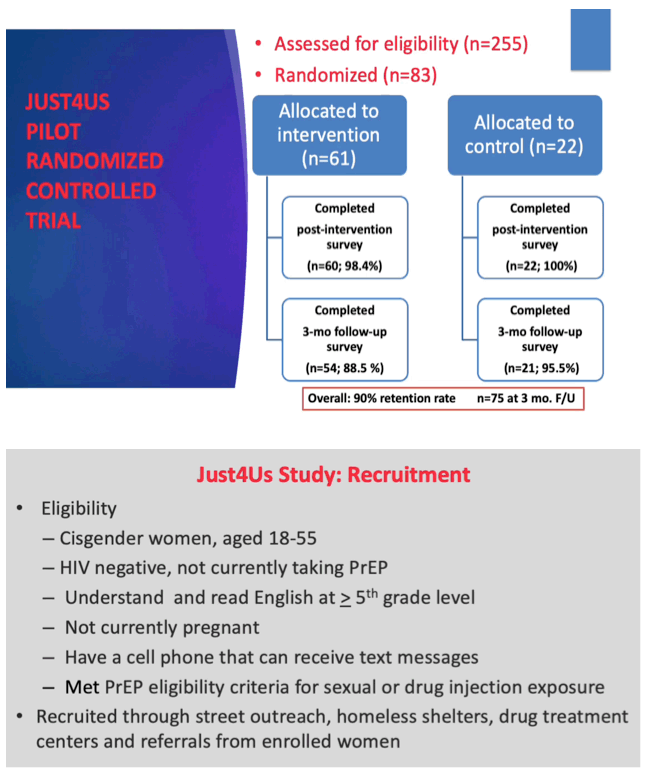
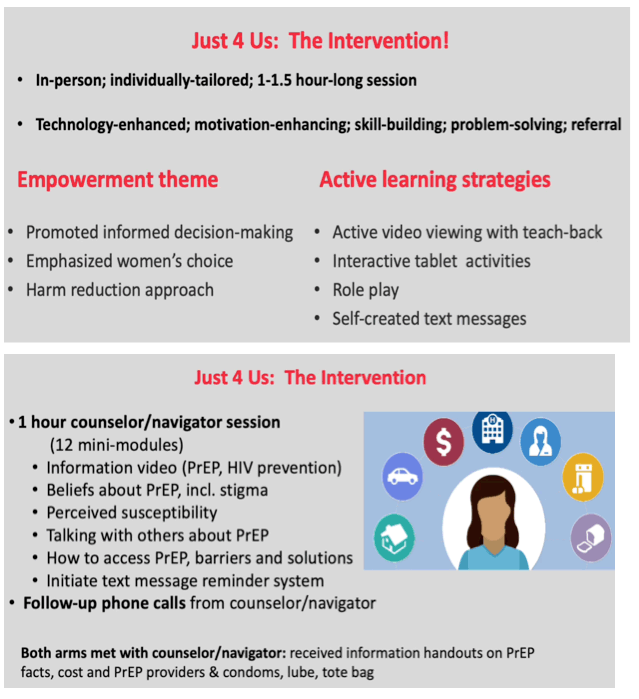
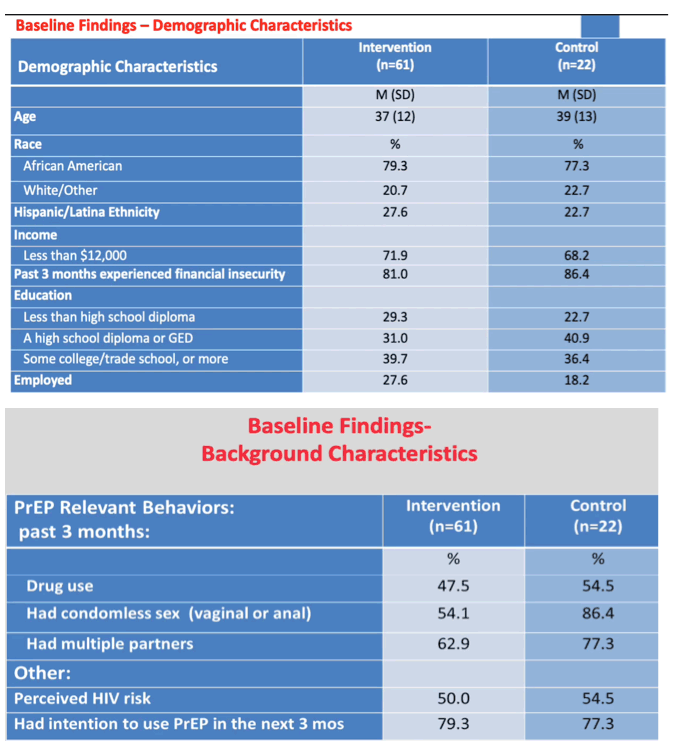
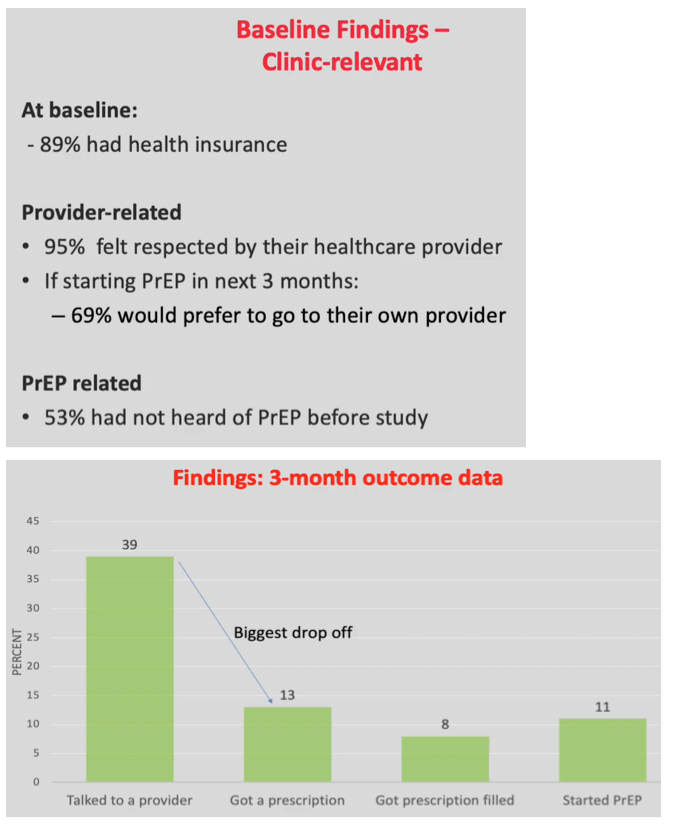
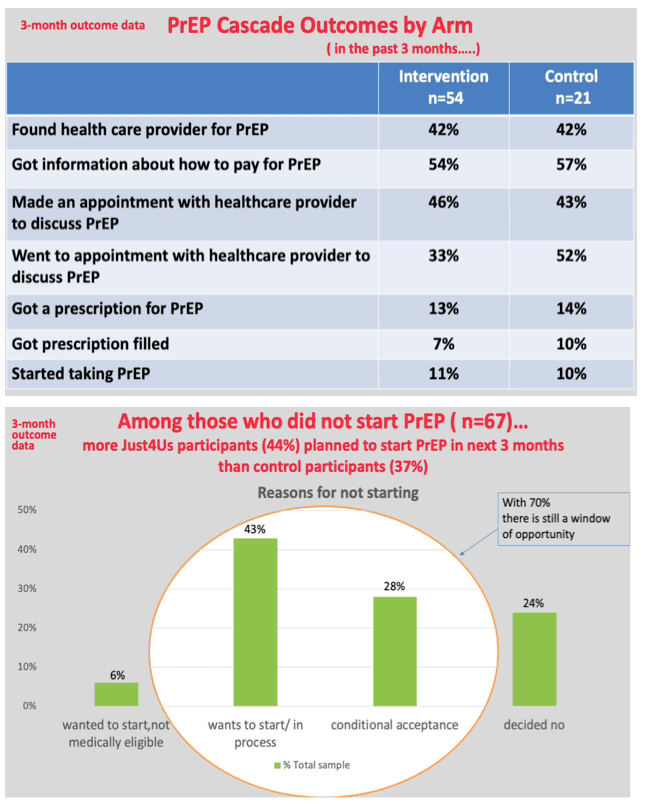
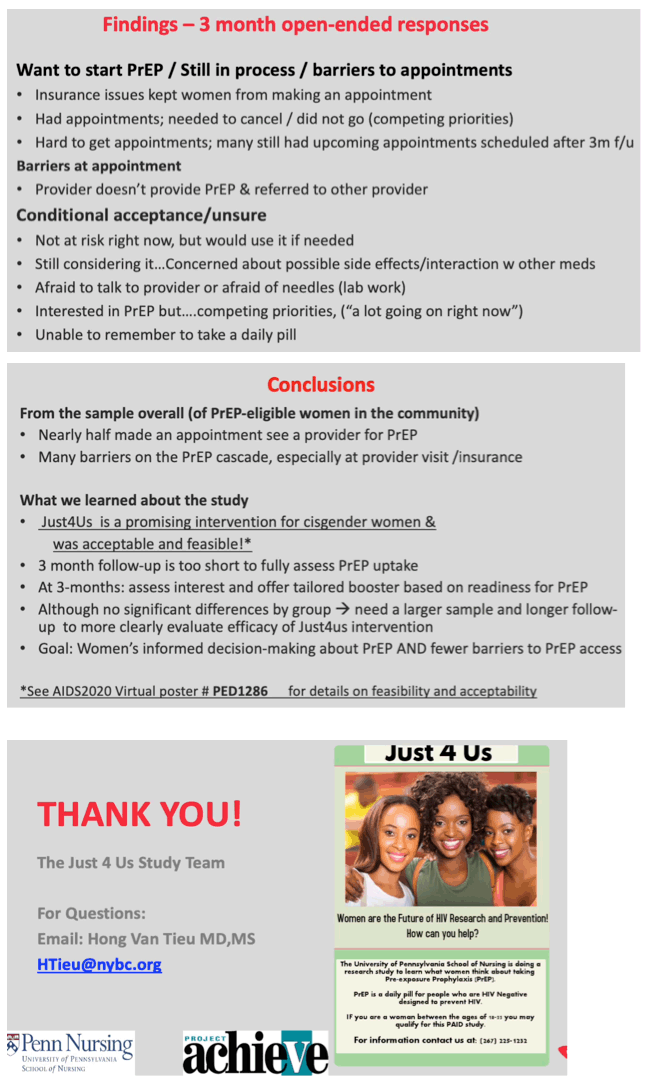
|
| |
|
 |
 |
|
|